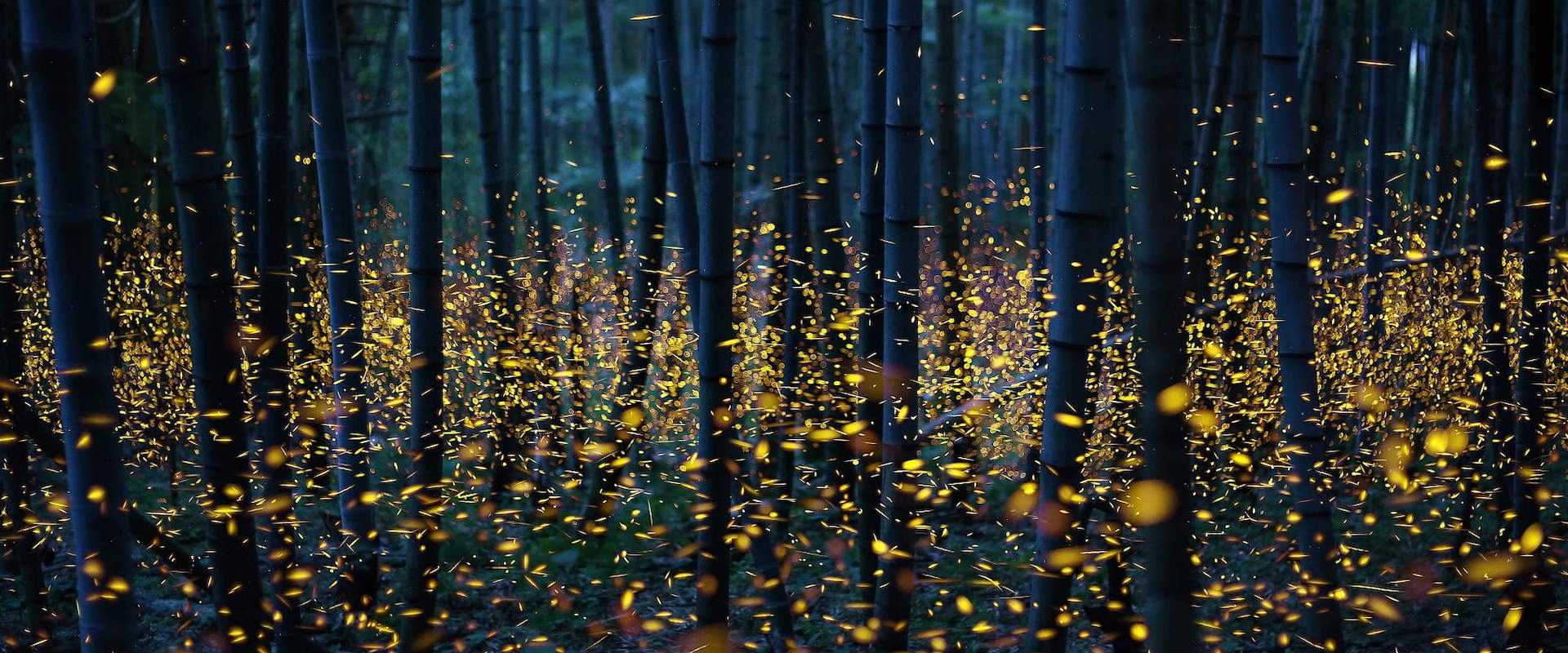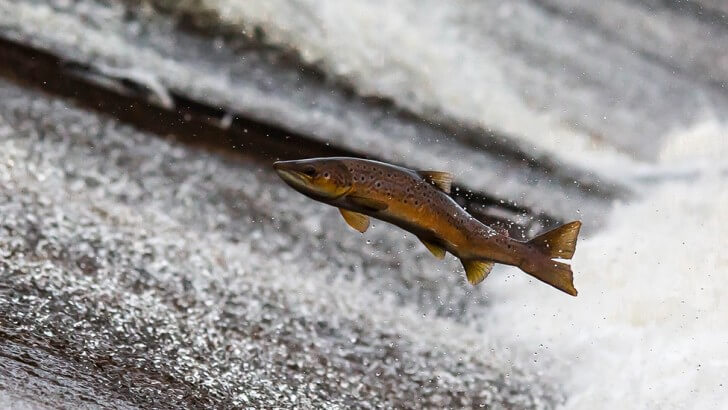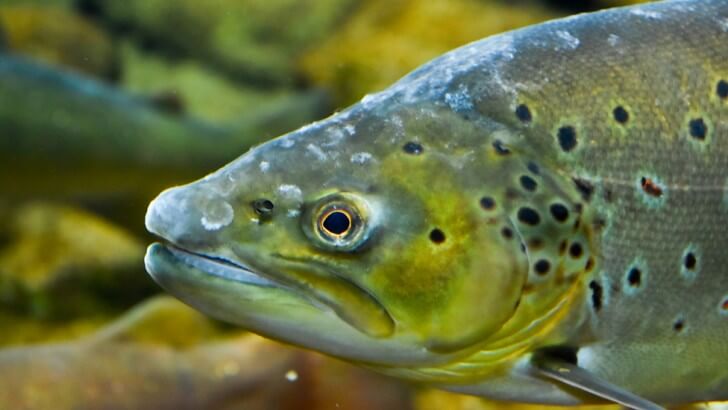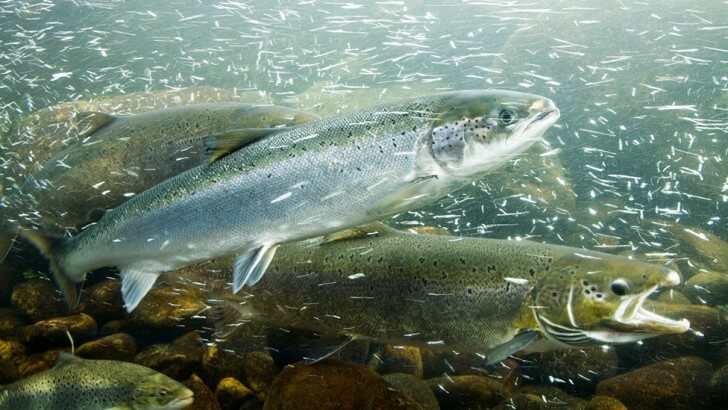

BBC Earth Podcast
Close your eyes and open your ears
Intimate stories and surprising truths about nature, science and the human experience in a podcast the size of the planet.
Seven Worlds, One Planet
Known as the king of fish, the Atlantic salmon (Salmo salar) has long been admired. A carving of one in a cave in France dates back around 25,000 years.
In Henry Williamson’s novel Salar the Salmon it is “a fish of new cut lead and new cut copper”, while the poet Ted Hughes described “the sea-going Aurora Borealis of his April Fury”.

Giant specimens can reach over a metre in length, even an average-sized adult can weigh more than 5kg. Behind this impressive appearance is a remarkable lifecycle – hatched in the gravel of a freshwater river, it journeys hundreds, even thousands of miles out to the ocean to bulk up before returning to its birthplace to breed and begin the cycle again. Romans called it ‘the leaper’, referring to its athletic ability to leap obstacles as it navigates from the sea back to its spawning grounds upriver.
This regal fish is now often associated with pristine habitats in the rivers of the Scottish Highlands or Nova Scotia, Canada, so it might surprise you to learn the migratory routes of Atlantic salmon pass through plenty of European cities. For example, look down from the ancient city walls of Chester, UK, to the River Dee in the summer months and you might just spot a shadow moving below the surface of the water.
Chester is home to the UK’s longest-running scientific fish trap, housed in a small brick building next to the weir. It offers an energy-saving shortcut to the salmon bypassing the steep weir, whilst allowing scientists to temporarily detain the fish. To monitor their health and estimate the river’s population the salmon are weighed, scale samples are taken, and they are tagged before being released to continue their journey. Sadly, recent statistics paint a dismal picture: In 2018, UK rivers recorded the lowest salmon returns in history.
Ian Davidson, Senior Technical Advisor Salmonids for Natural Resources Wales, has worked at Chester’s fish trap since the project began in 1991. He explains that while it is not clear exactly what is causing the declining populations, there’s evidence to suggest the problem lies out at sea.
“Salmon smolt tagging studies on the lower Dee indicate that the percentage of fish which survive the journey to sea and return as adults has fallen from around 6% in the mid-1990s to 2% in recent years,” he explains.
Salmon smolt tagging studies on the lower Dee indicate that the percentage of fish which survive the journey to sea and return as adults has fallen"
In the marine environment, salmon face threats from over-fishing, pollution, disease spread from fish farms and the effects of climate change such as rising sea temperatures.
The North Atlantic Salmon Conservation Organization (NASCO) has launched the International Year of the Salmon, in a bid to galvanise efforts to publicise, research and correct the problems faced by the fish.
Considered the ‘capital of the Highlands’, Inverness is no stranger to salmon. Situated at the mouth of the River Ness, which runs from the famous Loch Ness out to the Moray Firth, anglers still fish for salmon less than a kilometre from the city’s cathedral. The River Ness has long been considered one of the most productive in Scotland for salmon, and now efforts are being made to maintain the population.
Co-ordinated by the Atlantic Salmon Trust, the Moray Firth Tracking Project aims to identify where on their migratory route the fish are dying, before identifying the main causes of mortality with a ‘Likely Suspects Framework’ and finally creating and implementing plans to reverse the trend.

Work began in spring 2019 to capture juvenile salmon known as “smolts” on their seaward journeys and fit them with an acoustic tag. Receivers were deployed along seven river systems, including the Ness, and out in the Moray Firth. Inverness residents were likely unaware of the scientific study swimming past them all summer, but Dr Colin Bull, Principal Investigator for the Likely Suspects Framework, believes there are direct ways city folk could be helping out our beleaguered salmon:
“These would be to think very carefully about possible impacts before flushing away things that pollute rivers, switching to ecologically-sensitive detergents to reduce nutrient loading in watercourses, and to cut back on the amount of water we use on a daily basis,” he says.
“Whilst industry and agriculture account for a high proportion of human water demands, domestic water use is still amongst the highest of any country in the world, and in Scotland the vast majority of this water comes from our river systems,” he explains.
“Salmon don’t only need clean water, but they also need enough water in the rivers, at the right time of year, to allow them to successfully navigate the rivers between feeding and breeding grounds. By cutting back on our use of power and water, there is the chance that our river flow regimes will become less impacted by abstraction and hydropower and they can continue to provide the high-quality habitats to allow this amazing fish to survive.”
Scotland is a salmon stronghold in Europe, but the species ranges from Portugal in the south to Iceland in the north. In an effort to co-ordinate research efforts, NASCO has launched a project called SMOLTRACK which currently brings together partners in Denmark, England, Ireland, Northern Ireland, Spain and Sweden to share knowledge on smolt-tagging studies. Research so far has outlined bottlenecks on migration routes and identified major predators of the species.
These bottlenecks are often the result of barriers such as weirs, dams and power plants where salmon must expend significant energy to clear an impasse, making themselves vulnerable to opportunistic birds and mammals looking for an easy meal. Efforts are being made to address these barriers: news of a 'salmon cannon' designed to shoot migrating fish over a hydroelectric dam in Washington state, US, was a viral sensation earlier this year. European solutions might not be so audacious but there are plenty of projects attempting to mitigate man’s redesign of natural watercourses: fish ladders, channels, switchbacks, ramps and even elevators have been installed across the continent.

Salmon on the River Taff in Wales for example face a number of manmade obstacles, not least being the Cardiff Bay Barrage. This 1.1km long structure that effectively impounds the Bay incorporates a fish pass, described as “one of the most advanced of its kind in Europe” by the Harbour Authority that features underwater cameras, and motion and audio equipment to record the fishes’ passage. Locals may still remember autumn days watching salmon leap in the city centre’s Bute Park, but the introduction of a fish pass at Blackweir now allows the returning fish to conserve energy for their onward journey.
More urban examples of fish passes can be found on the River Dodder in Dublin, Ireland and the River Alster in Hamburg, Germany.
Since the introduction of tougher EU legislation regarding urban wastewater treatment in the 1990s, water quality in our cities has been improving and salmon have returned to rivers that were previously described as sewers. Even busy waterways such as the Seine in Paris, France and the Rhine which passes through 17 major European cities, have welcomed the fish back.
Amateur anglers and professional fishermen alike play an essential role in monitoring the fortunes of salmon around Europe. On the River Dee for example, anglers upstream from Chester’s fish trap report any marked fish they capture – enabling scientists to estimate how much of the year’s run was tagged at the trap and calculate an approximate population. While in Portugal, professional fishermen’s assertion that salmon were still to be found in the terminal stretch of the Douro River added to scientific findings that could be a ray of hope for the fish in the southern limit of their European range.
Perhaps with enough effort to make our seas and rivers fish-friendly, salmon runs will become regular city sightseeing highlights from Porto to Trondheim.


Intimate stories and surprising truths about nature, science and the human experience in a podcast the size of the planet.